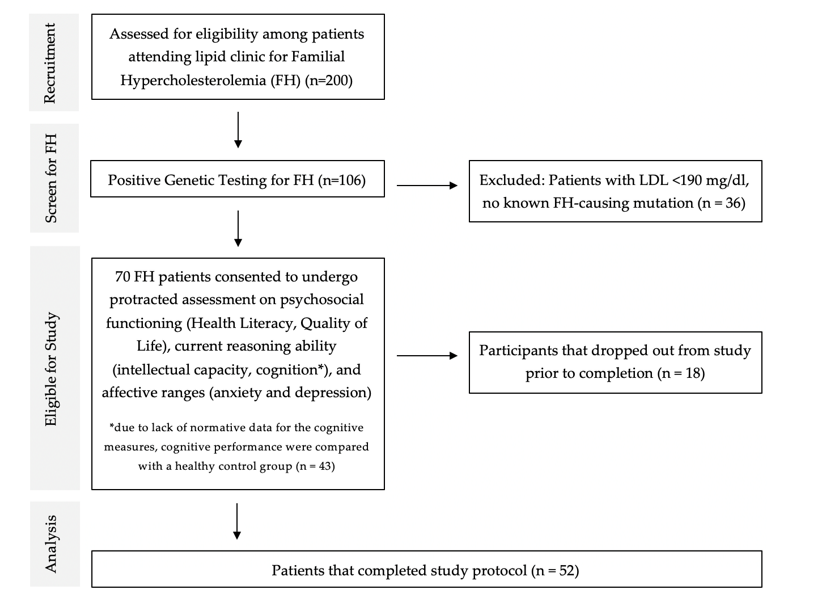BACKGROUND: Over the past few years, there has been an increasing interest to view the diagnosis of Familial hypercholesterolemia (FH) through the lens of the biopsychosocial model. However, other than a few epidemiological surveys, there is a dearth of studies from emerging economies that have examined FH using the biological, psychological and socio-environmental facets of the aforementioned model. AIM. The three aims of the current study were as follows: (i) to examine the psychosocial status among patients with genetically confirmed FH, (ii) to compare the intellectual capacity and cognitive outcomes with a reference group, and (iii) to examine the relationship between health literacy and cognitive functioning. METHOD: Consecutive FH patients referred to the lipid clinic at a tertiary care center for an expert opinion were recruited into this study, conducted from September 2019 to March 2020. Information regarding psychosocial functioning, health literacy, quality of life, and affective ranges were surveyed. Indices of current reasoning ability (attention and concentration, memory, and executive functioning) were compared with an age-matched reference group. The current hypothesis also explored the impact of FH on health literacy and cognition. RESULT: A total of 70 participants out of 106 (response rate: 66.0%) initially agreed to participate. However, 18 out of 70 dropped out of the study, yielding a final total of 52 FH patients. With 27 (51.9%) males and 25 (48.1%) females, the mean participant age stood at 37.2 years (SD=9.2), ranging from 21 to 52 years of age. In the psychosocial data, thirty-two percent (n=17) of them had anxiety (HADS≥ 8), and twenty-five percent (n=13) had depressive symptoms (HADS≥ 8). The performance of the FH patients was significantly impaired compared to the control group on the indices of current reasoning ability and all domains of cognitive functioning. In univariate analysis conducted to compare cognitive functioning with health literacy status, only indices of attention and concentration emerged as being significant. CONCLUSION: To date, there are only a few studies employing the biopsychosocial paradigm to investigate the FH population. The current study indicates that the FH population is marked by an impediment in almost all of the core features that are characteristically assessed by the biopsychosocial approach.

